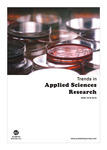| dc.description.abstract | Host preference by tsetse flies, tsetse-host interaction and host diversity and abundance were evaluated in relation to transmission risk of rhodesian sleeping sickness in two tsetse subpopulations in Kenya. Bovidae provided the highest proportion of blood meals (58%) to tsetse at Busia while that from humans was 4.9%. Contrastingly, the highest proportion of blood meals at Nguruman (35%) was from Warthogs, while no blood meals were obtained from humans at Nguruman. The bushbuck Tragelaphus criptus, Pallas, an important reservoir host of T.b. rhodesiense, provided 2.5% of bleeds meals at Busia and 5% of blood meals at Nguruman. Hosts were more diverse and abundant at Nguruman than Busia. Host activity did not significantly influence vector activity at both Busia and Nguruman during the dry season. However, there was a significant influence of host activity on vector activity (F10,11 = 7.27; p<0.022) at Nguruman during the wet season. The diversity and abundance of reservoir hosts at Nguruman is a potential risk in maintenance of sleeping sickness, unlike at Busia where the reservoir hosts are fewer and less diverse. The occurrence of Bovidae, especially livestock, as the major alternative source of blood meal at Busia pose higher risk to humans as the livestock are constantly in close contact with humans. Risk control would therefore aim at contact avoidance and sustained suppression of vector population | en_US |

